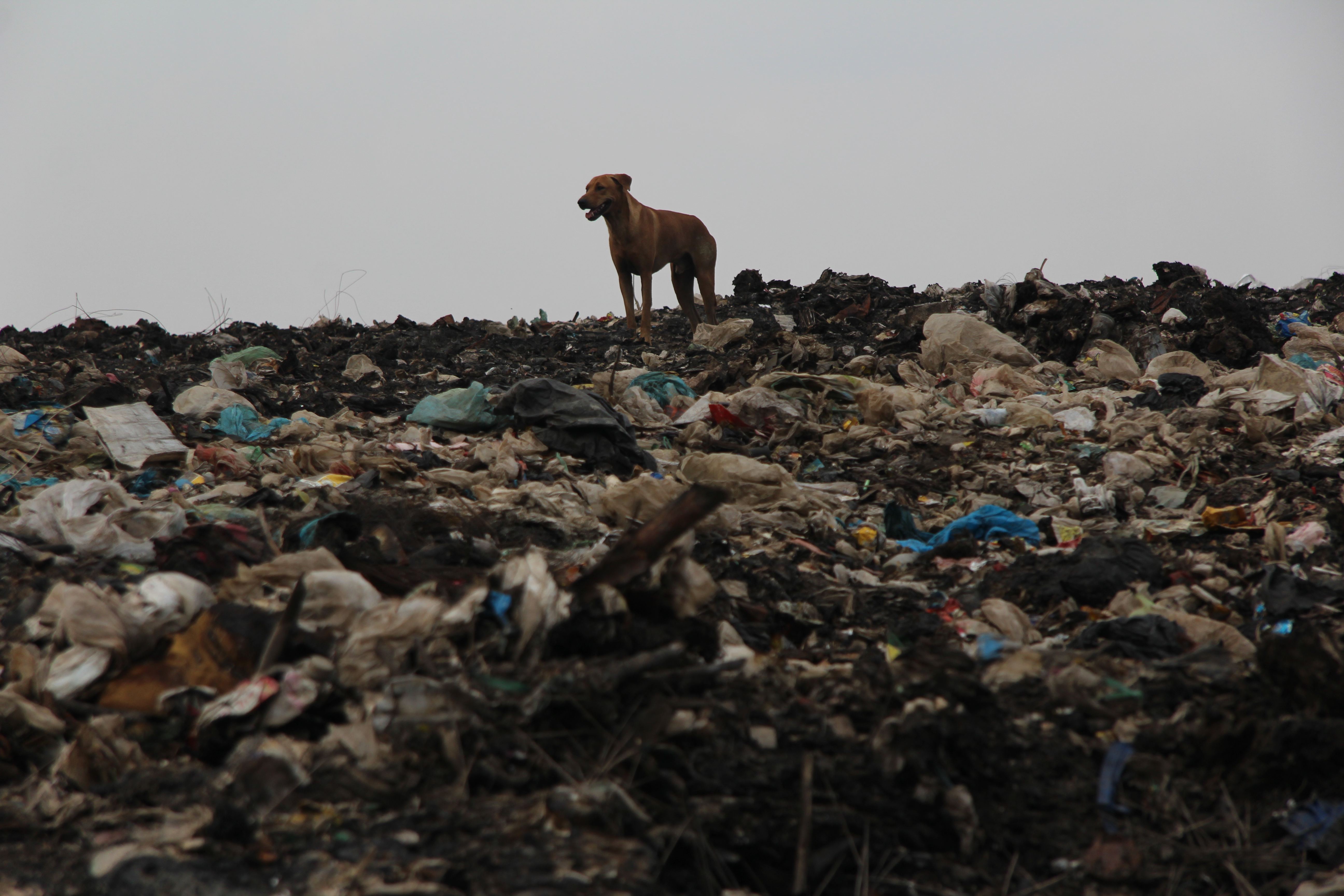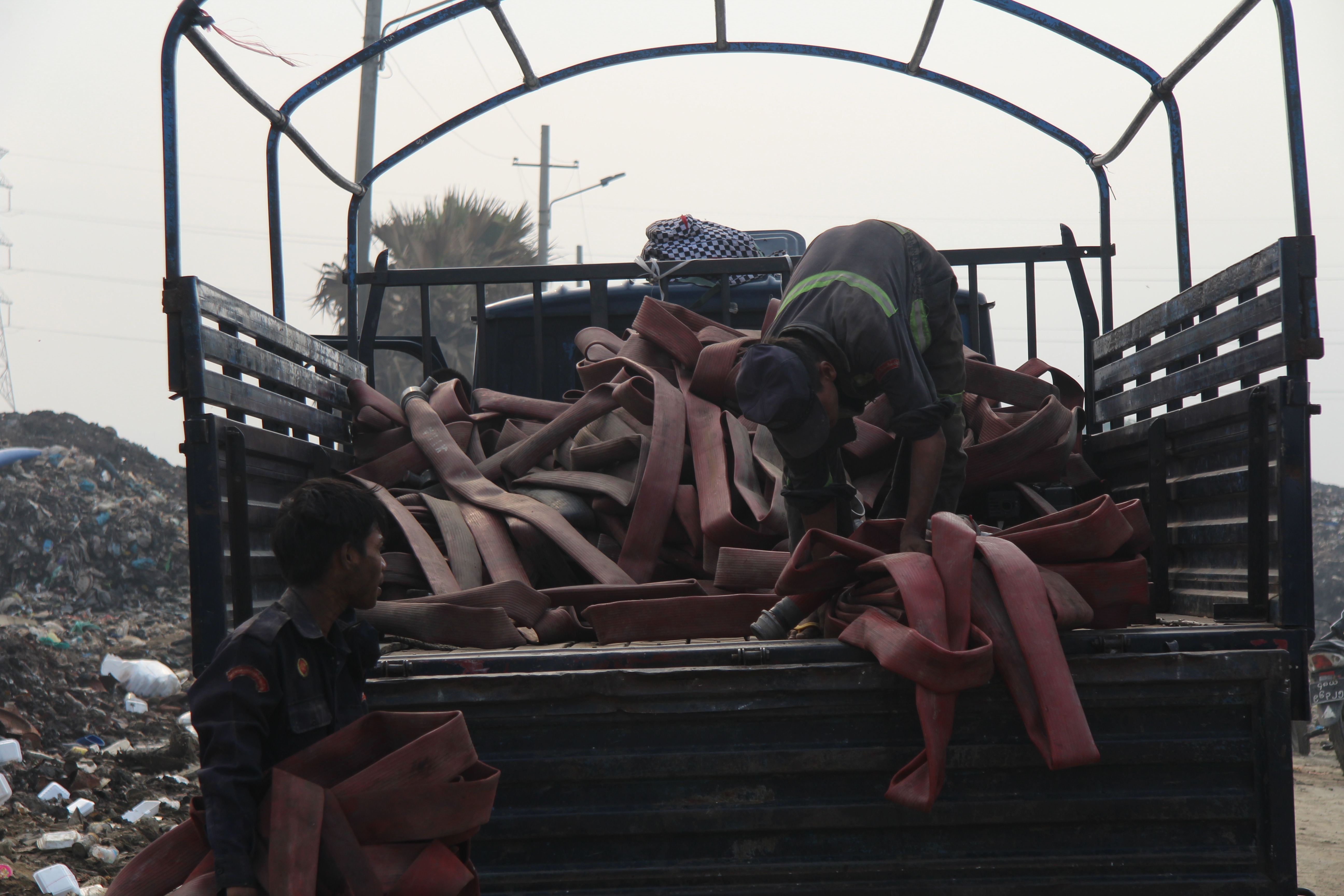On the final day of the battle against the Htein Bin fire, firefighters and city officials expressed their disapproval of the conditions that created the blaze. However, they also conveyed the unsettling sense that these conditions would not change any time soon.
Hundreds of firefighters packed up their hoses and left the still-smoking Htein Bin landfill on May 3, leaving a few men behind to make sure no flames resurfaced from the depths. That day, Myanmar state media declared “Mission Accomplished” in the fight against the flames, praising firefighters’ two-week effort to stem the flow of poisonous smoke and gas from the mounds of burning garbage into the city’s air, which caused more than 70 people to be hospitalized.
Standing on a heap of damp, blackened rubbish, Myint Oo, the fire chief for Yangon’s northern district, traced the horizon with his hand.
“Look around,” he said. “There is nothing on fire anymore. Of course, there are sections underneath that are still burning here and there, which we need to go and put out. A dump is always going to have some smoke here and there.”

Myint Oo believes the fire was “human-caused,” explaining that “it’s because of the way the trash is dumped. This dump, because it has been here for many years, heat gathers inside the trash heap. The pressure causes the heat to build, and a fire starts.”
The chief’s explanation is not far from the truth. In all likelihood, the fire in Htein Bin started as a result of heat and greenhouse gases generated by the decomposition of organic material in the landfill. Similar fires have sprouted from mounds of trash all over the world where there are no systems in place to either divert organic material from landfills or to allow heat and gas to be released from the ground faster than they are generated.
READ: Yangon’s great garbage fire fueled by folly
However, despite his responsibility to keep the landfill and the more than 700,000 residents of the surrounding Hlaingthaya Township safe from fires, the fire chief has been kept in the dark about what is being done to prevent another “human-caused fire” from starting in the future. When asked whether city authorities would implement a system to prevent future fires, Myint Oo said: “This is something related to [a different] department, so I don’t know. I’m sure they have a system for waste disposal, though.”
The body that oversees the city’s waste management is the water and sanitation section of the Engineering Department within the Yangon City Development Committee (YCDC). Like the fire chief, officials in this department are aware that if Yangon’s waste had been sorted properly during the 17 years of the landfill’s existence, the fire would probably not have begun. However, they remain similarly in the dark about whether the necessary reforms will ever be implemented.

Zaw Win Maung, an engineer in the department, said plans have been in the pipeline for “three or four years” to upgrade the Htein Bin landfill to a “sanitary landfill,” which would include a rubber membrane separating the rubbish from the ecosystem below, as well as layers of dirt dividing layers of rubbish to ensure that organic material stays dry, which would inhibit decomposition. A sanitary landfill would also include vents to allow the release of heat and gases from the depths of the dump.
However, Zaw Win Maung said, these plans have been stymied by higher powers.
“This is something we have been trying to introduce for a while and have asked the regional government for, but it’s taken a while for the understanding of the importance of waste management to be taken seriously by the government, and, therefore, there has historically been a lack of money and resources to do these kinds of things,” the engineer told Coconuts.
He conceded that his department bears some responsibility for the low priority given to waste management reforms.
“Fires like this happen because the public doesn’t understand the effects of continuing to treat the new types of trash we now have, like plastics, that don’t naturally decay, the same as old types of [organic] trash,” Zaw Win Maung said, adding: “This department has failed in being able to raise awareness around this issue.”
“In the future, every part of waste management needs to be reformed, from [households’] initial disposal all the way to the final dumping site,” he went on. “The first priority is to get the public to sort their wet trash from their dry trash. Then, go step by step in changing other behaviors and systems.”

If there is to be any silver lining around dumpster fire that filled Yangon with toxic smoke for two weeks, it would be the opportunity to educate the city’s residents on the potentially life-saving value of separating organic from inorganic waste. Ideally, the fire would inspire a local revolution in composting. But whether this opportunity will be seized remains to be seen.
When asked whether the landfill would be managed differently after the snuffing of the Htein Bin fire, Pyit Ko Ko, another water and sanitation engineer for YCDC, said: “That is something the people in power will know more about. We don’t know what they will want to do in the future, but we will follow the path they lay out for us.”



Reader Interactions